I drink a lot of Starbucks. It’s a block from where I work and they make a pretty good Chai latte, but it's their rewards program that has me hooked.
I get a star every time I make a purchase, and a free drink for every 12 gold stars I earn. No matter how much I do the math in my head to calculate the very minimal savings I’m actually getting, it still feels good to watch those little gold stars pile up, inching me toward my next "free" latte.
Before I even knew about the rewards program, I had already started earning stars. I got a gift card from a friend and found out that just by using the card to buy drinks, I’d already racked up some stars. I registered the card to start earning rewards because I didn’t want the stars to go to waste. After all, I was one step closer to the only thing better than coffee...free coffee.
That tactic worked really well for Starbucks. In 2013, 1 in 8 Americans received a Starbucks card for the holidays, which helped them gain 1.5 million new rewards members.
Three years and one unshakeable caffeine habit later, I have an explanation for why it worked: the endowed progress effect.
What is the endowed progress effect?
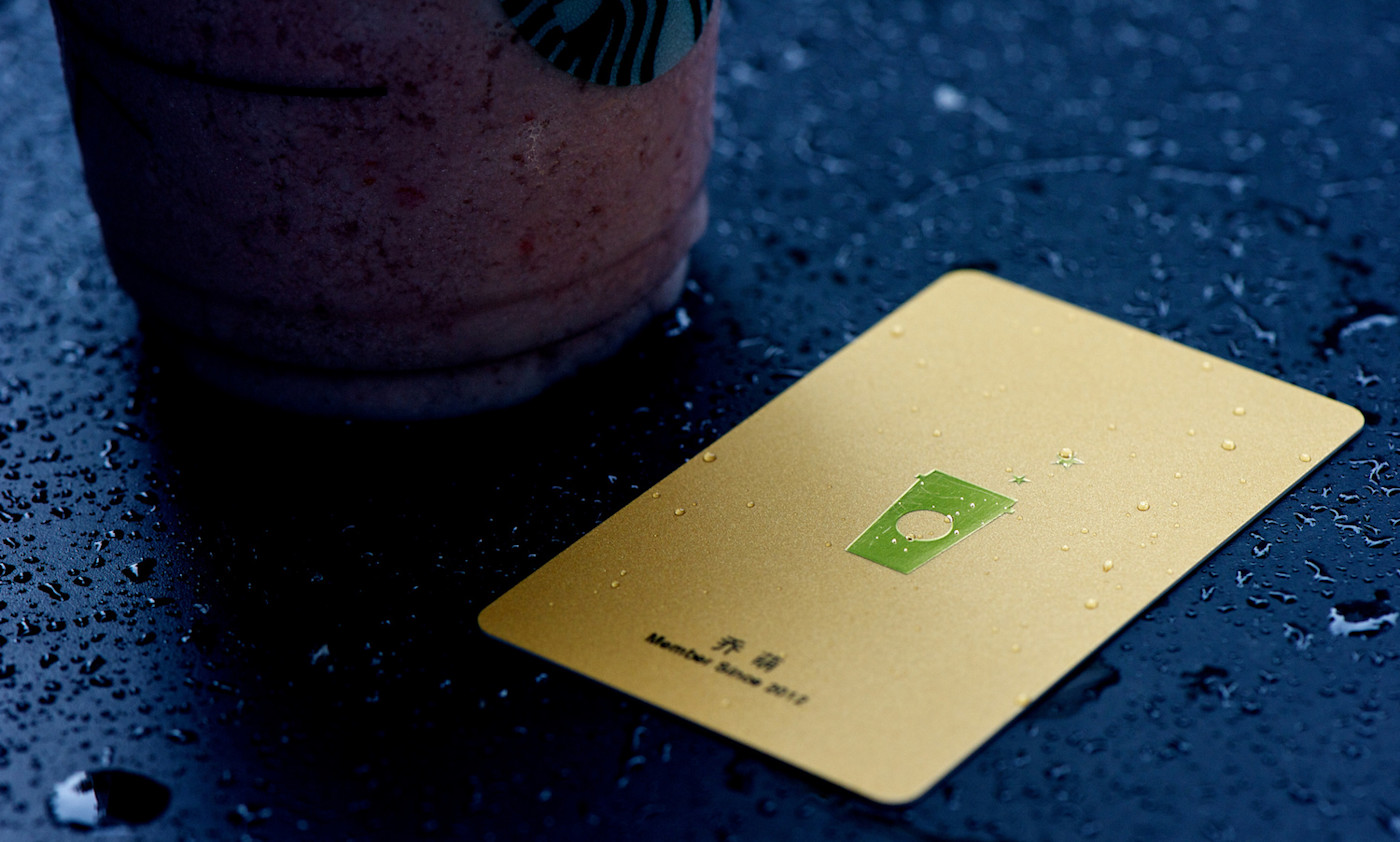
The endowed progress effect is the idea that if you provide some type of artificial advancement toward a goal, a person will be more motivated to complete the goal. In other words, having accidentally earned those original Starbucks stars made me more motivated to buy more drinks and earn enough stars for a free drink.
Researchers Joseph C. Nunes and Xavier Dreze tested this idea with loyalty cards for a car wash. They handed out cards requiring 8 purchases for a free car wash, which means the customers had to get 8 stamps to redeem the reward. They also handed out cards requiring 10 purchases but with two of the spaces on the card already stamped. Each group technically needed to put forth the same amount of effort to get their free car wash. After 9 months, 34% of the people with 2 free stamps had redeemed their cards versus 19% percent who had cards without stamps.
If you provide some type of artificial advancement toward a goal, a person will be more motivated to complete the goal.
Basically, the endowed progress effect makes people think they have a head start toward completing a goal. It reduces the amount of perceived work, which makes them more likely to put in the effort.
It’s important to note the difference between endowed progress—or progress that’s awarded—and progress someone earns. Each can affect motivation a little differently depending on the situation.
In one study, participants who had been given two free stamps toward a free sandwich as a promotion were more motivated to earn the rest of the stamps to get their reward than people who had two stamps because they’d purchased two sandwiches. But when participants had a high amount of earned progress (people who had purchased many sandwiches and were really close to their free reward), they were more motivated than people with the same amount of endowed progress because they saw the extra free stamps as having more value.
Whether we’re talking about endowed progress or earned progress, the ideas behind the effects are very similar, with the end goal of motivating people toward action.
Why does it work?
There are a number of ideas at play that can help explain why the endowed progress effect works.
The Zeigarnik Effect
The Zeigarnik Effect is the tendency to think about uncompleted tasks more than completed tasks.
Basically, not finishing a task or tying up loose ends can be really bothersome, nagging at us until we complete it. Researchers call this task tension. It’s that nagging feeling that helps someone stay the course until they’ve achieved the goal and can relieve that tension.
It's why cliffhangers are so effective in movies and TV shows. It’s why crossing off an item on your to-do list can feel so satisfying. It’s why this might freak you out.
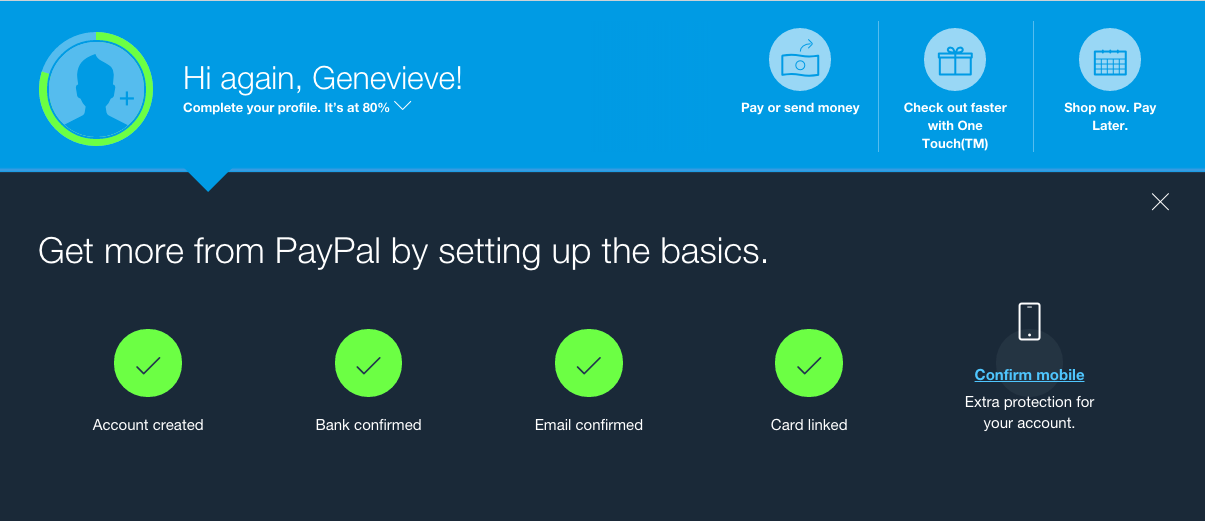
One common place to see this effect today is in online profiles. PayPal uses green check marks to let users know what they’ve completed in their profile and what they have left to do. The idea of having just 20% or 10% of work not yet finished can be really motivating because you want to see that 100% and feel done.
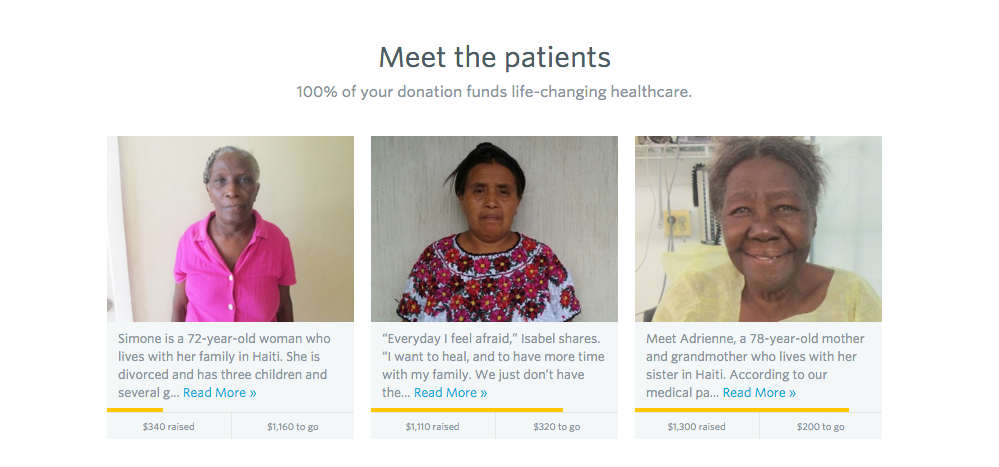
Nonprofit healthcare startup Watsi uses visuals to show how much money a patient needs to fully fund their care. Watsi designer Mustafa Al-Qinneh says they have donors who will specifically look for for patient profiles that need just $10 or $20 more to be fully funded. "They want to contribute and feel great about making that last contribution that gets them the green check mark," Al-Qinneh says.
Goal Gradient Effect
The closer someone is to a goal, the harder they work to complete the goal. This idea is called the goal gradient effect.
In the 1930s, psychologist Clark Hull ran a study that timed rats running in a maze. He found that the closer the rats got to their reward (food), the faster they ran.
Another researcher, Judson Brown, expanded on the study in the 1940s by attaching harnesses to rats running towards food. He measured how strongly the rats were pulling on the harnesses when they were stopped, and found that rats that were stopped nearer to food pulled harder than rats farther away from the food.
The researchers who studied the endowed progress effect expected that providing some type of artificial progress toward a task would provide even more momentum because it moved people closer to a goal—making them try that much harder to reach it.
Expectancy
When you see runners sprint at the end of race, that’s called a "kick." That finishing power can be the difference between standing on the podium with a medal or listening to another country’s national anthem. If runners kick too soon, they risk losing steam before they cross the finish line. Kicking too soon makes the goal seem a little too unreachable, with too much effort required physically and mentally.
It can be the same for any other type of goal or task, because of expectancy, or the belief that your effort will result in achieving a desired goal. According to researchers at the University of Rhode Island, whether you think you can achieve a goal has a big effect on whether you actually do.
If someone thinks they don’t have the ability to achieve a goal—that the expectations are too high or that they can’t control whether they achieve a goal—their motivation will be low because they have low expectancy.
The endowed progress effect uses this idea by providing a boost toward a goal, reducing the amount of work required to cross the finish line. By reducing the workload toward a goal, you can make the goal seem much more attainable.
Using the endowed progress effect
Whether you’re onboarding users, creating a loyalty program, or trying to get yourself to get more done each week, here are a few easy ways to achieve the endowed progress effect:
1. Create a Head Start
If you can provide a head start or a perceived head start, you’ll be able to put the Zeigarnik Effect to work, framing the task as incomplete rather than not yet started.
As part of its home try-on program, online eyeglasses retailer Warby Parker will ship up to 5 frames to customers for free so they can try them on and get opinions from others. Then, customers can keep and pay for the frames they like and return the rest for free.
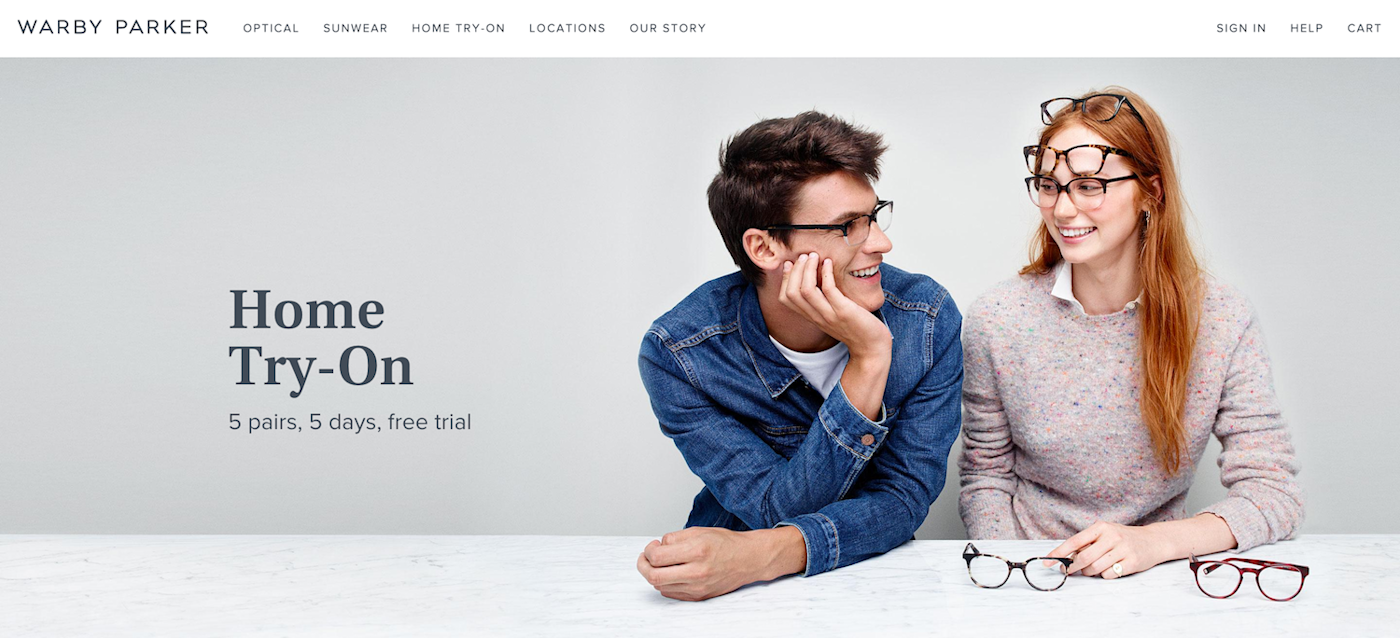
Customers put in minimal effort to get the frames, and by the time they’re trying them on, they have a nice head start toward actually making a purchase. They’ve already started down the road toward a goal, and now all they need to do is make a decision.
2. Use Abstract Measurement
Tallying progress in some form of abstract measurement—like points, stars, or stamps—intensifies the endowed progress effect, Nunes and Dreze found. The researchers studied shoppers at a liquor store who purchased wine. Some shoppers were offered a free bottle of wine after 10 purchases, while others were offered a free bottle of wine after they earned 100 points—with each purchase counting for 10 points. Shoppers using the program with points rather than purchases were more committed to the program.
If you’re familiar with gamification, this concept is nothing new. Offering extrinsic rewards or incentives like points or levels boost interest, engagement and repeat usage.
Project management app Todoist is a great example of this idea at work. Inspired by gamification, the app uses a karma system to award points for productivity. Users can increase their score by adding and completing tasks regularly, achieving daily or weekly goals, completing tasks before they’re due and using features like labels and recurring deadlines.
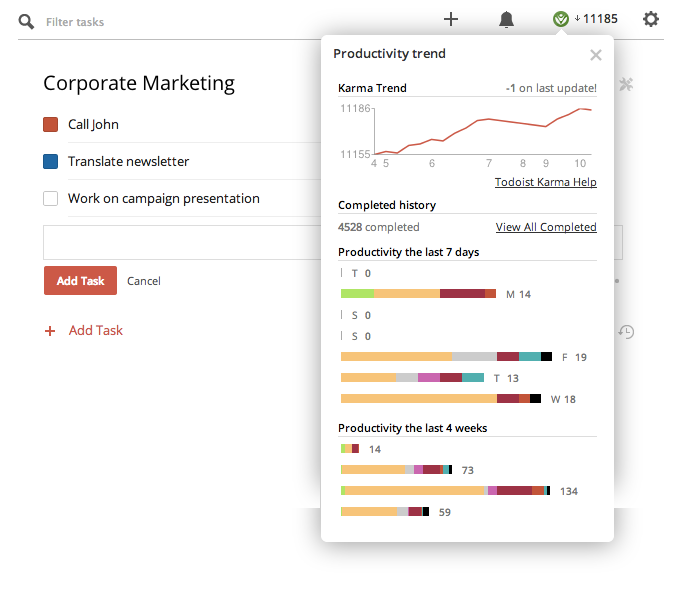
"In the beginning, maybe you’re just interested in leveling up," says Todoist CEO Amir Salihefendic. "Later on, you get interested in hitting daily and weekly goals. For productivity apps in general, it’s very hard for users to stick with a system, and there’s a lot of hopping around. Karma is a way of getting people to stick with the system."
3. Focus on Resources Already Spent
The more time, money or or effort people have already invested, the more likely they’ll want to keep going.
Todoist capitalizes on this idea as well. If a user’s productivity lags or they have tasks that are more than 4 days overdue, they’ll see their karma score decrease.
That, Salihefendic says, is a good reminder of what they’ve already put into the app. "If you have tens of thousands of completed tasks and a high karma score, you have invested a lot in the system, and you wouldn’t want to lose it," he says.
4. Sequencing: Break a Larger Task into Smaller Steps
When you break a bigger goal into smaller tasks, it lets people focus on one thing at a time, making the overall goal seem much more manageable.
A good example of this is the signup process for automated proofreader app Grammarly. The app displays three steps in their signup process, breaking it up so users can focus on each step one by one.
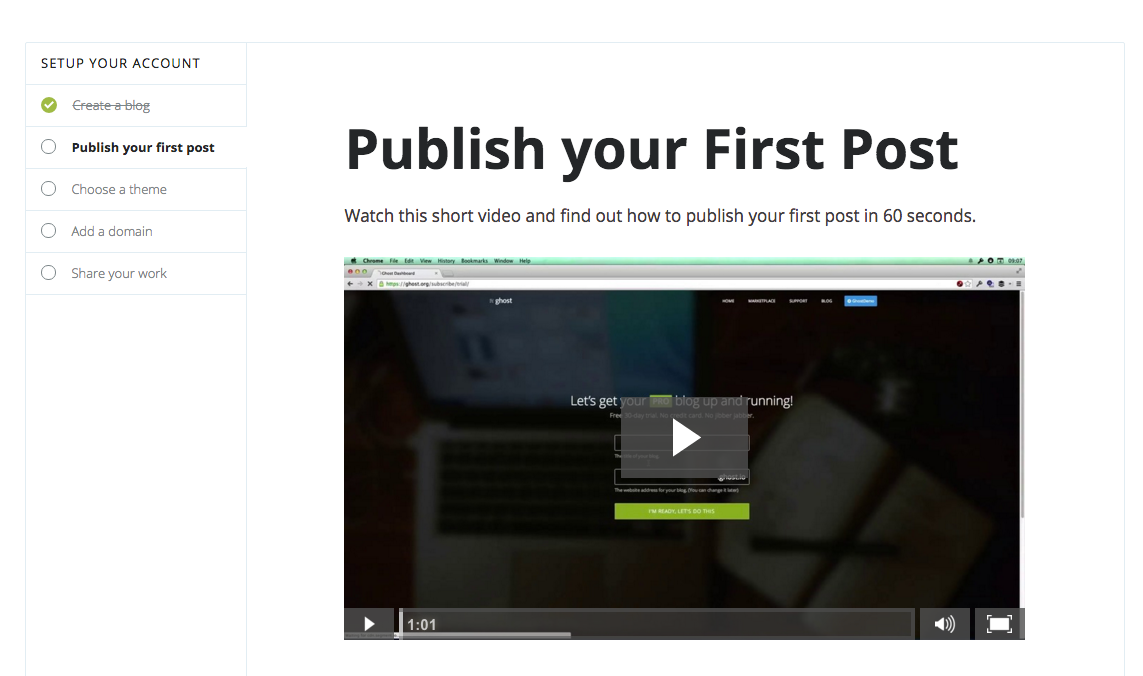
Blogging platform Ghost does the same thing with their onboarding process. When a user reaches the point of publishing their first post, the next steps are clearly laid out for them, with a satisfying green checkmark and strikethrough for tasks they’ve completed.
5. Be Transparent About What’s Left to Do
Research shows that users want progress indicators so they know where they are in the process and how much work is left to do.
There are a lot of ways to do this effectively. You might communicate to a user that they’re on step 3 of 5, that they’re 85% done with a task or that they only have to earn a certain number of points before they can claim their reward.
Watsi has seen this work well for them with their newly launched campaigns, which are ways donors can call on others to help them fundraise. For example, a donor might set up a campaign in honor of his or her birthday and ask family and friends to contribute.

When Watsi first launched campaigns, they realized that campaigns with a set goal performed much better than open-ended campaigns.
"We’ve noticed that campaigns that have a goal associated with them do really well," says Al-Qinneh. "They reach the goal at a faster rate than ones that don’t."
Not only that, but campaigns with a set goal would typically exceed the goal, resulting in more donations than open-ended campaigns.
When you use the endowed progress effect, you’re really just making it easier for people to be consistent with their intentions. Helping people more easily achieve their goals is going to put a smile on their face and yours. Anything you can do to help reduce the perceived amount of work to be done and provide a head start (or the illusion of a head start) is going to help motivate your users or customer and create more positive interactions.
And it can work for your own productivity, too. Break your own tasks into smaller chunks, be honest with yourself about how much is left to do, and use a to-do list app like Todoist that helps incentivize you to complete projects, and you might just be able to trick your brain into working harder and getting more done.
Further Reading
Trying to find a way to motivate your team and yourself to finish projects better? Here's a look at the best project management systems that can break up tasks and motivate you to finish what you've started.
Steps photo from Image Catalog via Flickr; Starbucks Rewards photo by Simon D via Flickr.





